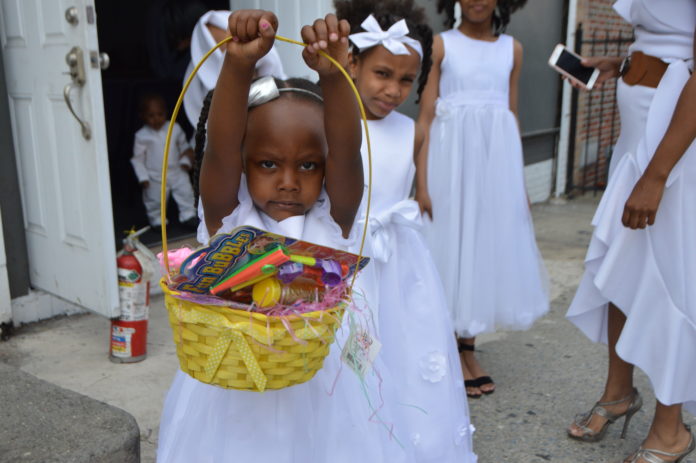For as long as we can remember there have been two commandments over Easter for Black people: Thou shall attend Easter church service—even if it’s the only time you’ll do so for the year. And thou shall rock a brand new outfit to slay at during said Easter church service. While many community celebrations are highlighted by feasts, egg hunts, and spring cleaning traditions, for Black folk, the occasion allows us to enjoy all of the above and add a new item to our wardrobe—ideally something pastel. If you’re like us, you may have followed this stylish custom since birth without knowing it’s origins. Most likely you grew up with your Mama choosing a lavender accented dress or mint shirt that you either loved or hated. Yes, it true, it’s in our DNA to display our Black excellence through fashion, but along with its cultural significance, this annual slay also has roots in superstition, religion, capitalism and respectability politics. This weekend we explored Crown Heights, Brooklyn for people dressed in their Easter “Sunday’s best.” Learn about the origins of the tradition and see the fashion-forward folks who honored it below:
Superstition:
During the 15th-century a proverb written in an almanac stated: “At Easter let your clothes be new; Or else for sure you will it rue.” The saying led many people to believe it was bad luck to wear old clothes on the holy holiday. The almanac’s distribution fueled the superstition which eventually became tradition. Don’t front, we know you know someone who wouldn’t be caught in last years fit on Easter service
Christianity:
In the early days of Christianity the clergymen were required to wear White robes after lent as a sign of purity, being reborn, and the resurrection of Jesus. By 300 A.D, after a royal decree by Emperor Constantine, the court was legally required to wear new clothing on Easter. These adorable kids kept it angelic in all white.
Capitalism:
Like many holidays such as Christmas, Mothers day and Valentine’s day, Easter is leveraged by the capitalist machine. In America, the marketing of this holy weekend began with the first annual New York Easter Day Parade in the 1870s. Fashion forward crowds from around the country would attend in their new clothes. The ceremony became a yearly stage for fashion designers and eventually a selling point for retailers who would promote their latest spring styles.
Respectability Politics:
 The commodification of Easter led to the loss of the holiday’s significance. By the mid-20th-century, Americans began to associate the holiday as an occasion to shop rather than its holy origins. It became customary for people to purchase new Easter clothes as the ability to do so became not only an elite status symbol but the general expectation. Respectability politics likely played a role on the way Black folk engage with Easter. Respectability politics are ideals and cultural expectations that the minority are expected to follow in order to gain the rights and respect automatically afforded to the majority. It benefited African Americans to assimilate. New Easter clothes meant one less reason to be stigmatized. Black excellence is more than just beauty and style it’s a means of survival.
The commodification of Easter led to the loss of the holiday’s significance. By the mid-20th-century, Americans began to associate the holiday as an occasion to shop rather than its holy origins. It became customary for people to purchase new Easter clothes as the ability to do so became not only an elite status symbol but the general expectation. Respectability politics likely played a role on the way Black folk engage with Easter. Respectability politics are ideals and cultural expectations that the minority are expected to follow in order to gain the rights and respect automatically afforded to the majority. It benefited African Americans to assimilate. New Easter clothes meant one less reason to be stigmatized. Black excellence is more than just beauty and style it’s a means of survival.
See the rest of the Sunday slay below:















